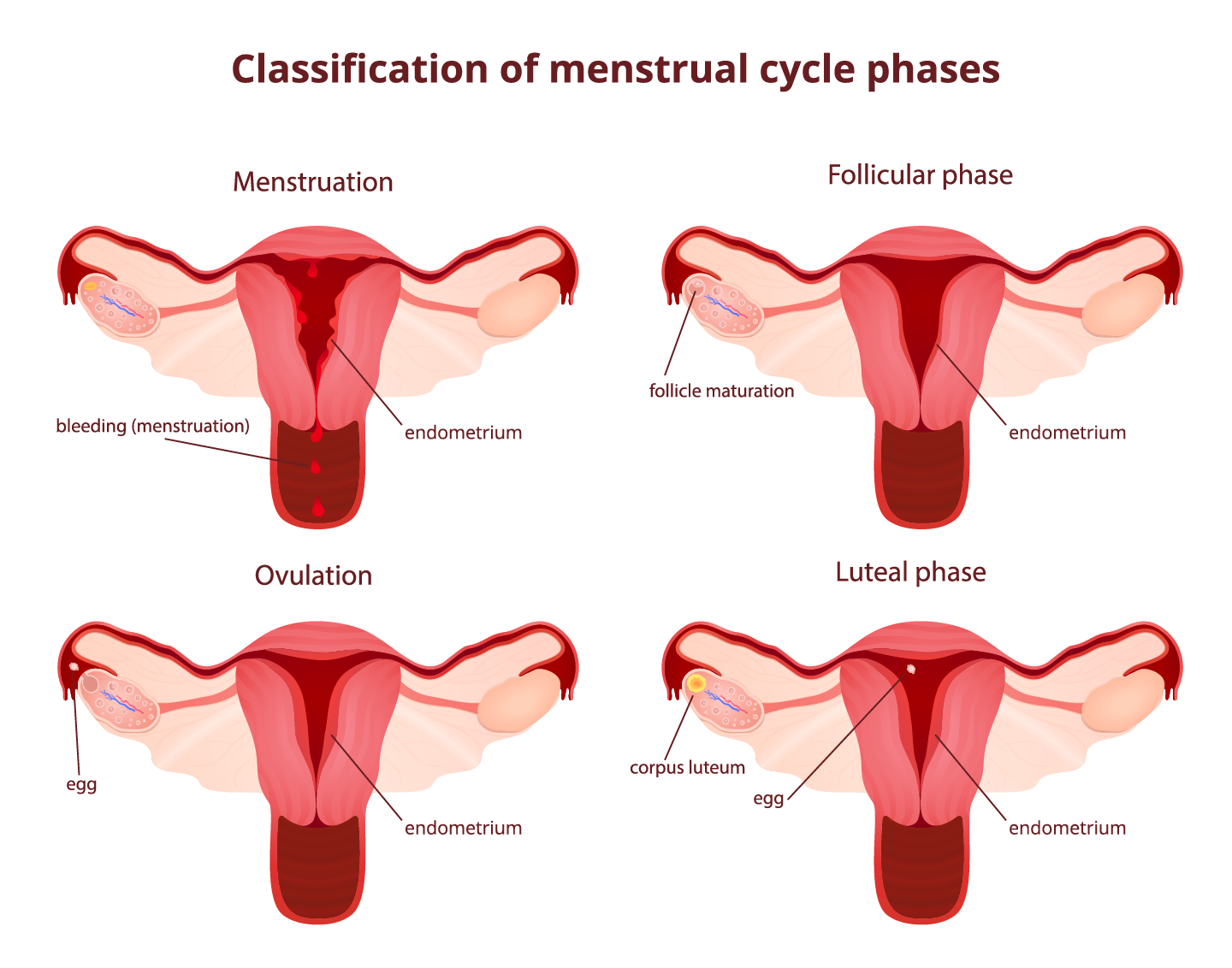Understanding the luteal phase is crucial for tracking fertility, as its length is generally consistent from cycle to cycle. Monitoring the timing and length of this phase can help identify potential issues or irregularities in the menstrual cycle. If you have concerns about your menstrual cycle or fertility, it is recommended to consult with a healthcare professional for personalized guidance and support.
The luteal phase is an essential part of the menstrual cycle that follows ovulation. Here’s what happens during this phase:
- Timing: The luteal phase occurs after ovulation and lasts until the start of the next menstrual period. It typically spans around 10 to 16 days, with an average length of 14 days.
- Corpus Luteum Formation: After ovulation, the ruptured follicle in the ovary transforms into a temporary endocrine gland called the corpus luteum. This structure plays a crucial role in preparing the uterus for a potential pregnancy.
- Hormone Production: The corpus luteum produces high levels of progesterone, a hormone that helps thicken the uterine lining (endometrium) to create an optimal environment for embryo implantation. It also stimulates the secretion of other hormones, including estrogen.
- Uterine Changes: Under the influence of progesterone and estrogen, the uterine lining becomes rich in blood vessels and nutrients to support a fertilized egg. If pregnancy occurs, the embryo implants into this thickened endometrium. If fertilization doesn’t occur, the uterus prepares to shed this lining during menstruation.
- Basal Body Temperature: During the luteal phase, a woman’s basal body temperature (BBT) typically increases due to the higher levels of progesterone. Tracking BBT can help identify ovulation and provide insights into fertility patterns.
- Premenstrual Symptoms: Many women experience premenstrual symptoms during the latter part of the luteal phase. These symptoms may include breast tenderness, bloating, mood swings, fatigue, and food cravings. These symptoms are believed to be influenced by hormonal fluctuations.
- Hormone Decline: If fertilization and implantation do not occur, the corpus luteum eventually degenerates. This leads to a decline in progesterone and estrogen levels, triggering the start of menstruation and the beginning of a new menstrual cycle.
How Long Does the Luteal Phase Last in the Menstrual Cycle?
The luteal phase, an important stage in the menstrual cycle, typically spans between 10 to 16 days, with an average duration of 14 days. However, it’s essential to recognize that the length of the luteal phase can vary among women. While some consistently have a 14-day luteal phase, others may experience shorter or longer phases. Generally, a luteal phase ranging from 10 to 16 days is considered normal.
Monitoring the length of your luteal phase is valuable for understanding your reproductive health and fertility. By tracking your menstrual cycle, you can determine the timing of ovulation and identify any irregularities. If your luteal phase consistently falls shorter than 10 days or exceeds 16 days, it may be wise to discuss this with a healthcare professional to ensure optimal menstrual health and potential fertility.
>Read More: Differentiating Between Implantation Bleeding and Menstruation: A Comprehensive Guide
Signs of the Luteal Phase in the Menstrual Cycle
During the luteal phase, the body undergoes hormonal changes and prepares for potential pregnancy. Here are some common signs indicating the luteal phase:
- Basal Body Temperature (BBT) Rise: After ovulation, the release of progesterone causes a sustained increase in basal body temperature. Monitoring your BBT can help confirm the occurrence of the luteal phase and identify the timing of ovulation.
- Cervical Mucus Changes: During this phase, cervical mucus becomes thicker, stickier, and less fertile compared to the follicular phase. It may appear creamy or sticky, creating a barrier that makes it harder for sperm to pass through the cervix.
- Breast Tenderness: Increasing levels of progesterone during the luteal phase can lead to breast tenderness or sensitivity. Breasts may feel fuller, heavier, or more sensitive to touch.
- Bloating: Some women experience bloating or a sense of abdominal fullness during the luteal phase. Hormonal fluctuations and water retention can contribute to these sensations.
- Mood Swings: Fluctuating hormone levels, particularly a decrease in estrogen, can cause mood swings or emotional changes during this phase. Irritability, anxiety, or increased sensitivity are common experiences.
- Food Cravings: Cravings for certain types of food, particularly carbohydrates or sweets, are not uncommon during the luteal phase. These cravings can be influenced by hormonal changes and fluctuations in serotonin levels.
- Premenstrual Syndrome (PMS) Symptoms: The latter part of the luteal phase is often associated with PMS symptoms. Fatigue, mood swings, headaches, bloating, acne breakouts, and mild cramping may occur.
Understanding the Events in the Luteal Phase
The luteal phase encompasses the formation and function of the corpus luteum, rising progesterone levels, changes in cervical mucus, an increase in basal body temperature, and the occurrence of premenstrual symptoms. Familiarizing yourself with these events provides insights into fertility, menstrual health, and overall well-being. Tracking and recognizing these changes can aid in natural family planning, optimizing reproductive health, and identifying any irregularities that may require medical attention.
Resources
- Mayo Clinic – Menstrual cycle: What’s normal, what’s not: https://www.mayoclinic.org/healthy-lifestyle/womens-health/in-depth/menstrual-cycle/art-20047186







